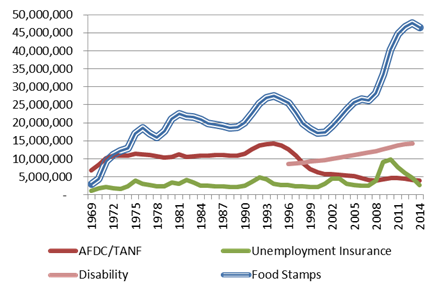Op-Eds
Agriculture Committee begins full-scale SNAP review
Washington, DC,
February 27, 2015
Tags:
SNAP
“SNAP is essential in protecting the most vulnerable citizens during tough times, but we need to have a complete understanding of its mission and purpose.” That was the message from House Agriculture Committee Chairman K. Michael Conaway this week as the committee began its top-to-bottom review of the Supplemental Nutrition Assistance Program (SNAP), previously known as food stamps. SNAP is now the largest welfare program in both the number of recipients and the amount of spending, yet the program lacks a clear mission, and data reveals that it is not helping to lift people out of poverty. Instead, it has become an income support for many. A thorough, thoughtful reviewChairman Conaway, a CPA by trade, is committed to begin a top to bottom review of the program with no preconceived notions or legislative agenda. At the full committee hearing on Wednesday, he said the committee wants the committee to “strengthen the program so it can serve as a tool to help individuals move up the economic ladder,” and doesn’t want SNAP to “hold people back from achieving their potential.” Why now?The Ag Committee is in the unique position of being post-recession and post-reauthorization. Rather than making haphazard reforms under a time-crunch, Chairman Conaway and Nutrition Subcommittee Chairwoman Jackie Walorski have proactively begun a thorough review, beginning with a fact-finding series of hearings this week exploring the history of the program as well as the dynamics and characteristics of its recipients. Necessary adjustmentsWhile the economy has changed and other welfare programs have adjusted to meet changing needs, it does not appear that SNAP has. Overall unemployment has fallen, yet the number of long-term unemployed remains high. The long and slow recovery since 2009 brought in a new group of healthy, working-age recipients to the program, who in the past had not used SNAP. This is a new dynamic not previously experienced following other recessions when periods of unemployment were much shorter. It is clear the needs of the SNAP population have changed, and now is the time for the SNAP program to change accordingly.
Source: Department of Agriculture, Food and Nutrition Service; Department of Health and Human Services, Administration for Children and Families; Department of Labor, Employment and Training Administration; Social Security Administration, Office of Retirement and Disability Policy. Looking AheadOver the coming months, the Agriculture Committee will continue holding hearings, at both the full committee and subcommittee levels, featuring a range of stakeholders.
|

